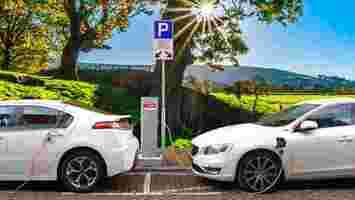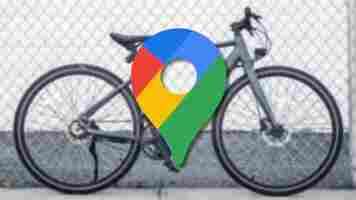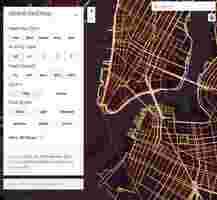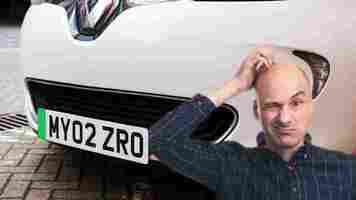There will be millions of EVs on the roads — how are we going to charge them all?
One consequence of Brexit is that Britain will desperately need a modernizing industrial strategy. In Boris Johnson’s mind, a key element of this is the recently announced “ green industrial revolution ” which included bringing forward to 2030 a ban on selling new petrol and diesel cars and a commitment to spend a further £1.3 billion on charging infrastructure for electric vehicles.

This announcement might suggest that the transition to more sustainable mobility is ambitious but straightforward. After all, we already know how to build a decent electric car and charging point technologies are also well established. So surely the green revolution is a simple matter of increasing the pace and scale of what is already here?
But this glosses over the complexities of such a radical transition. There is still a great degree of uncertainty involved in everything – from how many charge points will be needed and where, to how our practices and our streets might have changed by the time we reach the other side of the transition .
Electric and hybrid vehicles account for nearly 10% of sales but are still less than 1% of cars on British roads. Therefore, electric drivers are still the 1% of people whose circumstances make it easier for them to adapt their driving practices to the needs of the technology. They tend to be people who like novelty, are concerned for the environment, and who may not drive long distances. They also tend to be wealthier people with access to off-street parking who can easily install a charging point at home.
But if the ambitious goals of the green industrial revolution are to be met, technology must adapt to the needs of people from all walks of life. We cannot simply ban everyone from getting a petrol car, install a charging point in every neighborhood and think that will be sufficient. The government envisages most charging taking place at home, describing it as a “key attraction” of electric car ownership.
But many city homes do not have access to a drive or other off-street parking – in London, for example, two-thirds of households have no off-street parking. Would it be feasible to install on-street charging points next to all such houses? Even if it were, what would that do for street clutter? How would the pavements change if they became crisscrossed by electric wires?
After the UK government created an Office for Zero-Emission Vehicles (OZEV) ten years ago, one of the office’s first actions was to launch the Plugged in Places program, deploying charging points in a range of locations across the UK (we were involved in the Milton Keynes deployment). The program initially focused totally on the technology – but local authorities and industry partners were encouraged to take different approaches to charging to analyze the effectiveness of different strategies, locations , and charge point types. Some went for shopping areas, others workplaces – and a variety of charger designs were explored and ways to use them. Ever since, electric vehicle policy in the UK has had an important element of experimentation and learning by doing.
Today our team at the Open University is involved in another charge point trial , which is one of a number of government-funded projects exploring different approaches to providing electric charging in public spaces. Ours explores the possibility of wireless charging. Wired on-street residential charging looks fine now, but mass use could produce a tangle of cables which people could trip over, especially the elderly and poorly sighted. In the long term, some form of wireless systems will be needed and will have to be deployed in a variety of situations – on terraced streets, in neighborhood charging hubs, or even – were personal car ownership to fall – as part of a car club or as a new system of public transport .
This approach may or may not be suitable for achieving the goals of the green industrial revolution. The danger is that today’s needs in the still-emerging electric vehicle market might not be right for the mass market of the 2030s. Perhaps none of the current generations of trials will find an answer, or perhaps some may, or maybe some will lead to solutions that will work in particular contexts. What is important is that a clear vision for the future is complemented by a profound awareness of the uncertainties involved and a willingness to experiment and engage in acts of socio-technical imagination.
This article by Miguel Valdez , Lecturer in Technology and Innovation Management, The Open University ; Matthew Cook , Professor of Innovation, The Open University , and Stephen Potter , Professor of Transport Strategy, The Open University is republished from The Conversation under a Creative Commons license. Read the original article .
SHIFT is brought to you by Polestar. It’s time to accelerate the shift to sustainable mobility. That is why Polestar combines electric driving with cutting-edge design and thrilling performance. Find out how .
4 improvements Google Maps should make for cyclists
Google Maps has recently added a number of cycling features as more people have taken to riding bikes, ebikes, and electric scooters during the coronavirus pandemic. And yet as much as I appreciate some of these updates, as I’ve started to explore other cycling-oriented applications, Google Maps‘ limitations have become increasingly obvious.

Here are just a few changes that I believe could make Google Maps far more appealing to cyclists.
I get it, Google Maps is mostly aimed at commuters and people taking the occasional impromptu trip. It’s meant to get you from point A to B as efficiently as possible, to the best of the app’s knowledge.
But sometimes I don’t want to just get somewhere as fast as possible. Sometimes I want to take the scenic route. Sometimes I want to go up unnecessary hills for a workout. Other times I want the opposite — to minimize sweating as much as possible.
Yes, there are other apps that are meant to do this — my app of choice is Komoot — and you can plan routes in Google Maps using roundabout methods. But Google Maps is often the most convenient, and unfortunately, the best you can really do with the mobile version of Google Maps app is add multiple stops and view your past routes.
Allowing users to plan their route in advance would not only provide more flexibility, but also help users feel safer by being more confident in their route decisions. It also means you could save your favorite workout routes easily — and it’s not hard to see how Google could integrate such functionality with Google Fit.
Even if I am just trying to get from point A to point B, the best cycling routes don’t always follow car traffic patterns or use bike lanes. In my own neighborhood, I know to avoid certain streets with shoddy bike paths. Sometimes I’d much rather go down a quiet, wide residential street without a bike line than a busy road with an unprotected bike lane that leaves me just a foot or two from angry drivers.


Though I’m sure Google factors in common user routes to some degree, I’d love some kind of heat map feature that allowed me to see what paths cyclists are normally taking — and where they deviate from Maps’ suggestions. This is especially useful when I’m visiting a new cycling location where I’m not familiar with the best paths to take.
This is one of the best features in Strava and Google no doubt has the data it needs to offer similar functionality.
There’s a common theme here, and it’s that Google gives riders very little information or choice in how their rides actually play out. Aside from simply choosing where I want to go with my bike, I don’t know what type of path I’m taking throughout the route. Am I going to be on a fully protected bike lane, or will I be on a narrow painted lane bumping elbows with drivers? Will I have to ride on a dirt trail or will I be on paved roads?
This is information Google likely already has and which could make an immense difference for cyclists. Different riders — and even different bikes — are better suited to different terrains, and being able to plan my route with a better understanding of the roads to come can be a literal lifesaver.
Back in 2019, Google announced support for mixed-mode commutes , allowing you to combine cycling with other methods of transportation. But since then, I’m not sure I’ve seen any suggestions of the sort, despite living in NYC. You know, one of the biggest cities in the world.
That’s a shame. Sometimes it’s fastest to combine a train ride with a short bike or scooter trip, avoiding long and dreary transfers. It’s not just for regular bikes either. Folding bikes and e-scooters are easy to bring on a train or cab or your own car, and could benefit immensely from multimodal options during longer trips.
And these are just a few improvements that the company could likely implement without making Maps too bloated. Heck, I’d even pay for a separate app using Google Maps data and Assistant integration just to get some proper cycling-centric navigation. If Google’s always going to be collecting data on us, they might as well put it to good use.
UK fails to explain what the hell those green number plates are
Last December, the UK introduced “green plates” for EVs in an effort to raise awareness o f zero-emission cars. Exciting, I know.

Bearing a green strip down the left side, they’re easily distinguishable from the regular number plates. This means the public can identify these people as the saints of sustainable transport they are.
At least, that’s what the government thought.
But… it turns out that the message wasn’t so well received by the drivers. A survey by the AA , that included 14,719 respondents, found that almost a third of UK motorists don’t know what the green plates mean.
Among those who gave incorrect answers, there are some hilarious misconceptions.
Some 274 people thought a green plate offers greater parking flexibility — reasonable, and we’ll come back to that. While 53 reckoned it signalled an Irish driver. Which is… just… I can’t.
Thirty-six believed it signifies a driver who’s a member of the Green Party. And here’s my personal favorite: there were 35 people who thought the green plate meant the driver had voted for Brexit. Yes, Brexit .
The survey also revealed that regional disparity and age play a significant part in understanding the role of the plates.
While Londoners were the most likely to identify what the green plates stood for (66%), more than half of those residing in Northern Ireland (54%) or Wales (59%) gave a wrong answer. Similarly, the majority of younger drivers (74%) knew what the plates are, which lowered by 16% for motorists aged above 65.
Survey aside, here’s another important factor that creates more confusion. The Department for Transport launched these plates with the aim to offer more incentives to current and prospect EV drivers. These would include access to bus lanes, free entry into zero-emissions zones, and cheaper parking.
Guess how many of these proposed benefits currently exist? Yep, none
I don’t know about you, but it seems to me that the UK needs to put some more effort into enabling the EV transition. After all, it shouldn’t be so hard a job to inform drivers on some new plates, should it?
HT – This is Money
Do EVs excite your electrons? Do ebikes get your wheels spinning? Do self-driving cars get you all charged up?
Then you need the weekly SHIFT newsletter in your life. Click here to sign up .